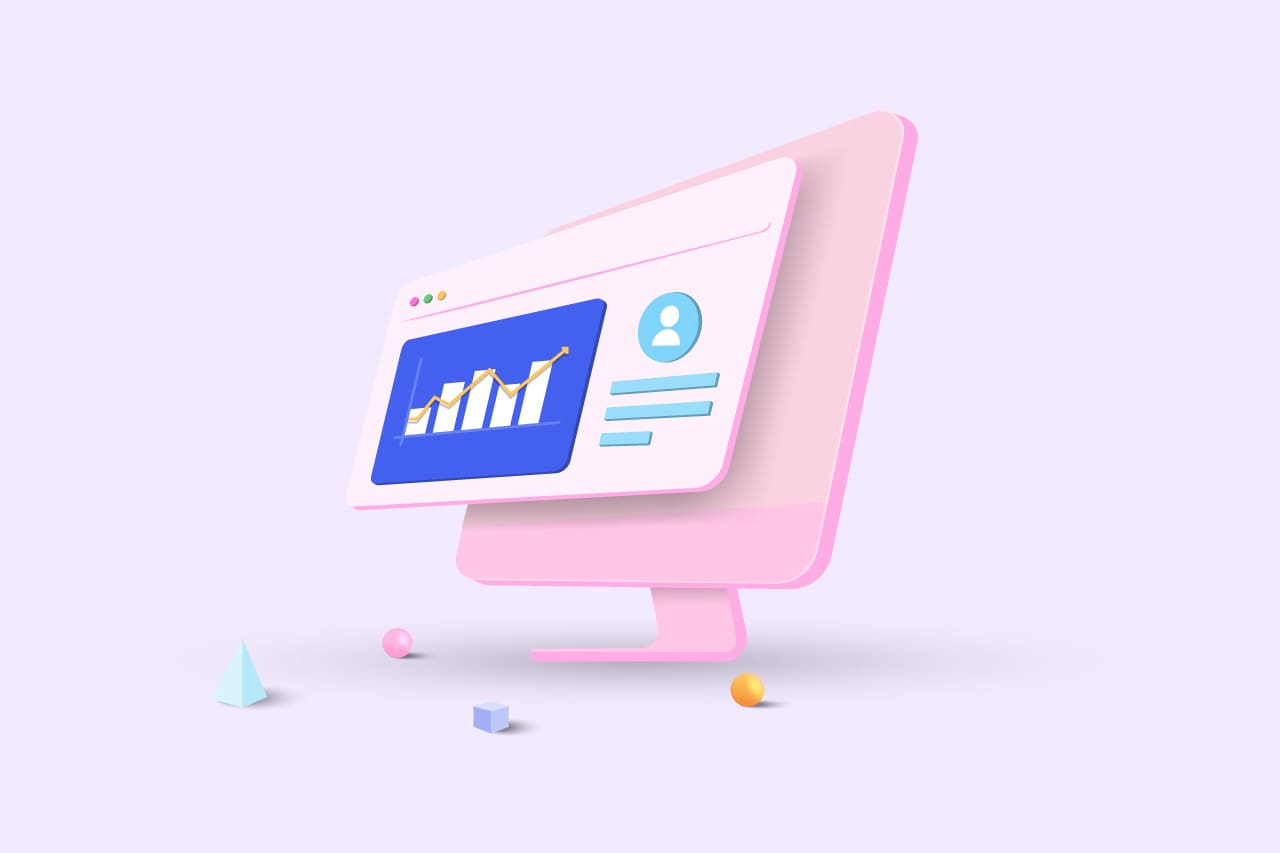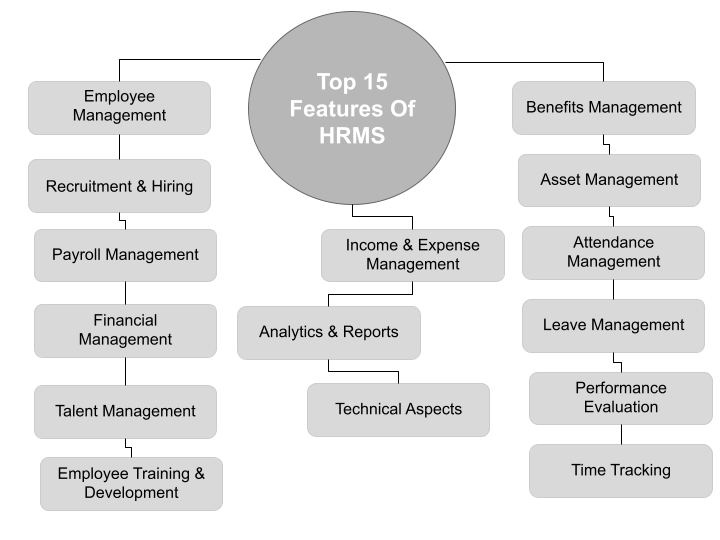Top 15 Features of Human Resource Management System (HRMS) in 2024

In today’s dynamic business environment, the role of HR specialists has evolved to encompass a myriad of responsibilities crucial to a company’s success, including recruitment, employee development, performance reviews, and retention strategies. The increasing intricacies of these tasks demand efficient management of employee information, prompting HR managers to seek innovative solutions. The global transition to remote work has only accelerated the need for automation in HR processes, emphasizing the importance of Human Resource Management Systems (HRMS). These systems, widely adopted by major corporations, streamline and optimize HR functions through the integration of IT and HR activities. Recognizing the time-consuming nature of administrative tasks, especially in the context of remote work, HR professionals can leverage HR software to automate documentation and enhance overall efficiency.
In this blog, we explore the top 15 features of HRMS that cater to the evolving demands of effective human resource management, providing insights into how businesses can thrive in the contemporary market landscape.
What is HRMS?
A Human Resource Management System (HRMS) is a specialized software designed to streamline the collaborative efforts of an organization’s HR department in the face of the increasingly complex daily tasks of HR professionals. In the current business landscape, where the responsibilities of HR specialists extend to various operations such as employee management, hiring, attendance tracking, leave management, payroll, and more, a digitalized HR solution becomes paramount for minimizing organizational risks and maximizing profitability. The software designed for HR purposes, commonly known as a Human Resource Information System (HRIS) or Human Capital Management (HCM), effectively automates HR and employee tasks, providing a cohesive and integrated system to elevate operational efficiency. As organizations actively integrate HRMS into their processes, the seamless fusion of HR and IT activities through a single HR software becomes a strategic necessity. In preparation for selecting an HRM system, understanding the critical features is essential, and our blog explores these must-have features to guide businesses in making informed decisions tailored to their specific needs.
Now, let’s explore the essential features to uncover their contributions to the smooth operation of an organization.

1. Employee Management:
The Employee Management feature within an HR Management System (HRMS) serves as the central hub for HR professionals to handle various employee-related activities. This includes efficiently managing employee profiles, personal information, salary histories, and other pertinent details. The system often incorporates an employee self-service portal, fostering transparency and communication.
2. Recruitment & Hiring:
This crucial feature automates and simplifies the entire recruitment process from start to finish. From candidate information collection to shortlisting, interview coordination, and final candidate selection, the Recruitment & Hiring module within an HRMS ensures a seamless hiring process. It often incorporates an Applicant Tracking System (ATS) for efficient applicant management.
3. Payroll Management:
Payroll Management in an HRMS is a comprehensive solution to handle the complexities of payroll processing. It empowers HR professionals to control salary structures, set up different salary types, and manage the entire payroll workflow. This unified approach removes the necessity for distinct payroll software, guaranteeing precision and effectiveness.
4. Financial Management:
The Financial Management feature in an HRMS provides HR departments with the tools to oversee the organization’s cash flow accurately. This encompasses overseeing financial statements, chart of accounts (COA), and activities like balance adjustment, cash adjustment, and bank adjustment. The module aids in maintaining financial transparency and accuracy.
5. Talent Management:
Talent Management in an HRMS focuses on evaluating and managing employee performance, behavior, and competencies. This feature often includes an automated system for employee feedback and reviews, fostering transparency through dashboards. This feature plays a vital role in enhancing customer and employee satisfaction by aligning individual performance with organizational goals.
6. Employee Training & Development:
Integrated with a Learning Management System (LMS), the Employee Training & Development feature in an HRMS efficiently organizes and manages a diverse array of learning materials and training programs, ensuring a systematic approach to employee skill enhancement. It helps identify technical gaps in employees’ skills efficiently tracks and estimates the costs associated with training sessions and development programs.
7. Benefits Management:
Benefits Management within an HRMS is crucial for enhancing employee satisfaction. This functionality empowers HR professionals to oversee and administer aspects such as health insurance, life insurance, paid time off (PTO), retirement plans, and travel arrangements, ensuring a comprehensive management approach to employee benefits. The inclusion of a reward-pointing system further contributes to building positive relationships among employees.
8. Asset Management:
The Asset Management feature in an HRMS extends beyond personnel to efficiently handle organizational assets. It simplifies the process of adding and maintaining a comprehensive list of equipment, allowing for easy assignment to employees. This module streamlines asset management, reducing paperwork and administrative hassles.
9. Attendance Management:
Fundamental to effective workforce management, Attendance Management in an HRMS automates the monitoring of daily attendance. The system captures attendance data and generates accurate reports, providing HR professionals with essential insights for better workforce planning and management.
10. Leave Management:
Leave Management in an HRMS enhances business productivity by automating the leave application process. It includes features for announcing holidays, managing different leave types, and providing a streamlined process for HR professionals to approve or reject leave applications. The comprehensive leave record ensures efficient tracking and management.
11. Performance Evaluation:
HRMS simplifies the Performance Evaluation process, offering transparency and accuracy in assessing employee productivity. This feature generates detailed reports that assist in decision-making for promotions and rewards. It provides a systematic approach to recognizing and rewarding high-performing individuals.
12. Time Tracking:
Recognizing the value of time, the Time Tracking feature in an HRMS monitors and manages how employees utilize their time. It includes functionalities such as time reporting, biometric fingerprints for attendance tracking, project billing, and generating accurate time-related reports. This aids in improving overall organizational efficiency.
13. Income & Expense Management:
Comprehensive financial reporting is facilitated by the Income & Expense Management feature in an HRMS. It allows HR professionals to efficiently manage income and expenses, providing detailed sheets for a clear overview of financial statements. This feature contributes to accurate financial tracking and reporting.
14. Analytics & Reports:
Analytics & Reports within an HRMS play a critical role in strategic decision-making. This feature offers real-time insights through various reports, including attendance reports, leave reports, employee demographics, positional reports, asset reports, and customizable reports. It empowers HR professionals with data-driven decision-making capabilities.
15. Technical Aspects:
The Technical Aspects feature in an HRMS ensures a smooth and efficient user experience. It encompasses crucial elements such as software deployment, mobile app integration, technical support, deployment processes, and ongoing maintenance. These technical considerations collectively contribute to the long-term effectiveness and sustainability of the HRMS.
How to Evaluate the Requirement for an HRMS Solution in 2024
Before deciding on an HRMS (Human Resource Management System) solution, it’s crucial to assess your HR functions and involve specialists to identify needs and objectives. Conducting a company meeting can be instrumental in discussing HRMS goals. Key points to consider include evaluating workload challenges, addressing geographically dispersed teams, analyzing turnover factors, empowering employees with self-assessment tools, ensuring data security, automating regulatory compliance, managing training needs, consolidating communication channels, improving performance management, accommodating scalability, and enhancing employee satisfaction. These considerations provide insights into where an HRMS can streamline processes and add value to your organization, guiding effective implementation.
How HRMS Can Enhance Your Business in 2024
Managing your workforce efficiently is a common practice in many organizations, often done without the aid of HRMS software. However, embracing a robust HRMS brings a multitude of benefits. With accessible features, anyone in your company can handle task management and utilize self-services. Executives and supervisors gain the ability to assign tasks, monitor attendance through a mobile application, and streamline company policies. The collaborative environment between employees and management is enhanced, contributing to overall revenue growth.
One of the key advantages of HRMS is its automation capabilities across various HR operations. From payroll management to recruitment and hiring processes, the system ensures efficiency in collecting, storing, and accessing essential data. It handles diverse aspects like accrued vacations, sick leave, payment calculations, performance evaluations, employee training management, bonuses, and compensation administration. Moreover, HRMS maintains statistics on HR and recruiting processes, including staff turnover, vacancies, and recruiting funnels. Employee self-service features, and integration with job portals for vacancy postings, creation of polls, and reminders for important events further contribute to its comprehensive functionality.
In essence, an inclusive HRMS operates seamlessly, resembling a well-oiled machine where every component collaborates to fulfill its role. The adaptation of HR to modernize and transform is imperative for businesses. To be at the forefront of this transformation, HR needs to identify and prioritize features that align with the organization’s business objectives.
Conclusion
In conclusion, the digital transformation of recruiting and HR is imperative for businesses seeking increased efficiency and productivity. An HRMS serves as a powerful tool in this evolution, offering automation of tedious HR processes, thereby allowing a more strategic focus on talent attraction, motivation, and development. The selection and implementation of suitable HR management software are pivotal steps that can significantly impact a company’s future growth and success. While these systems aren’t one-size-fits-all, they undeniably enhance productivity and reshape a company’s standing in the modern marketplace. Improved access to HR data that benefits employees, administrators, and executives, fostering informed decision-making and cost reduction. The key lies in selecting an HRMS tailored to your business needs, focusing on real experiences and automated processes rather than just aesthetic appeal. In essence, HRMS emerges as an efficient and essential tool for simplifying HR processes and empowering human resource professionals to navigate a dynamic business landscape effectively.




